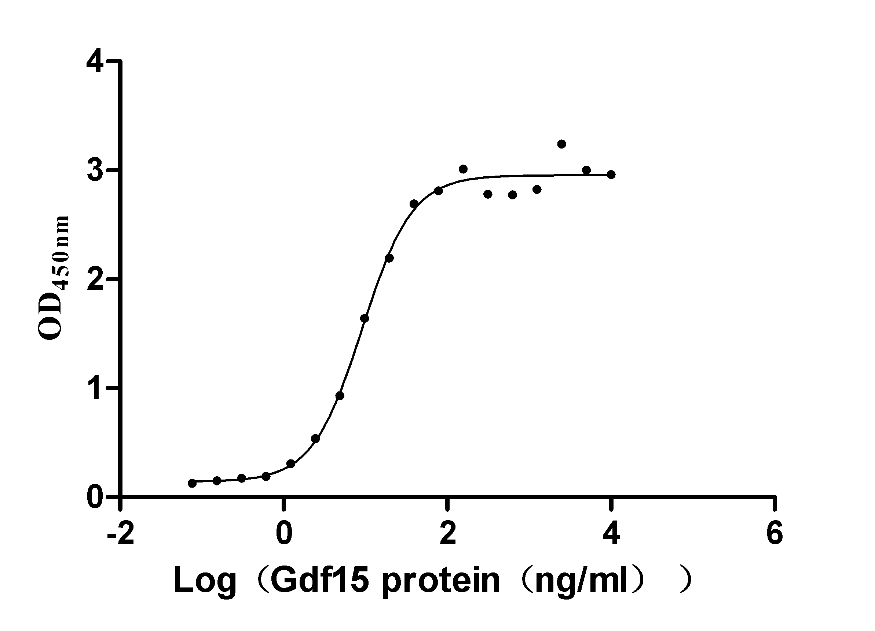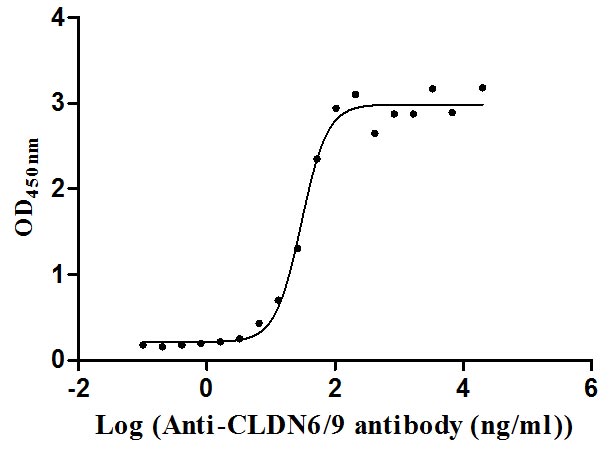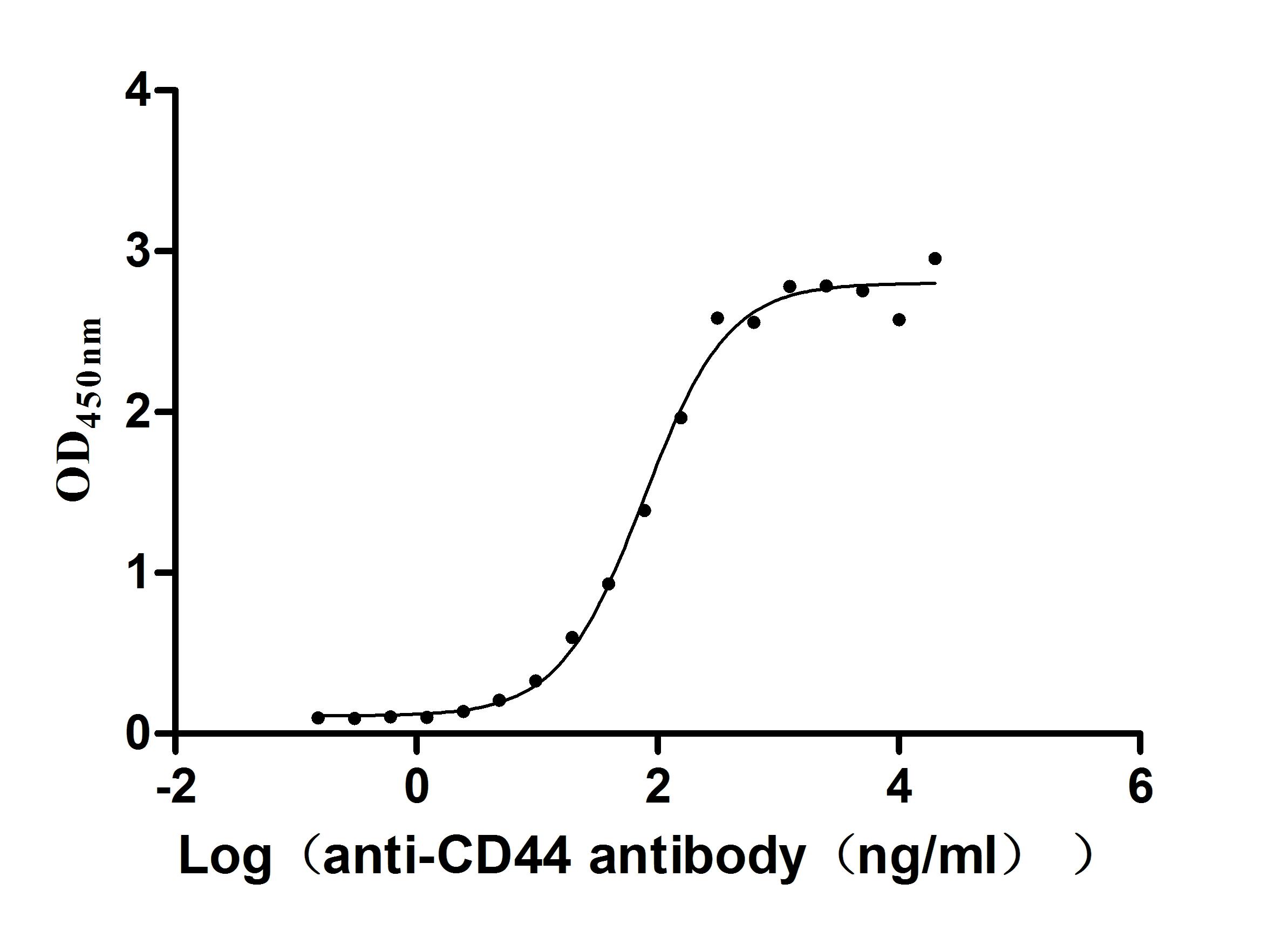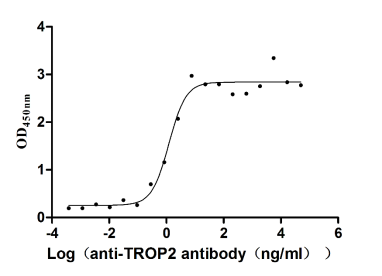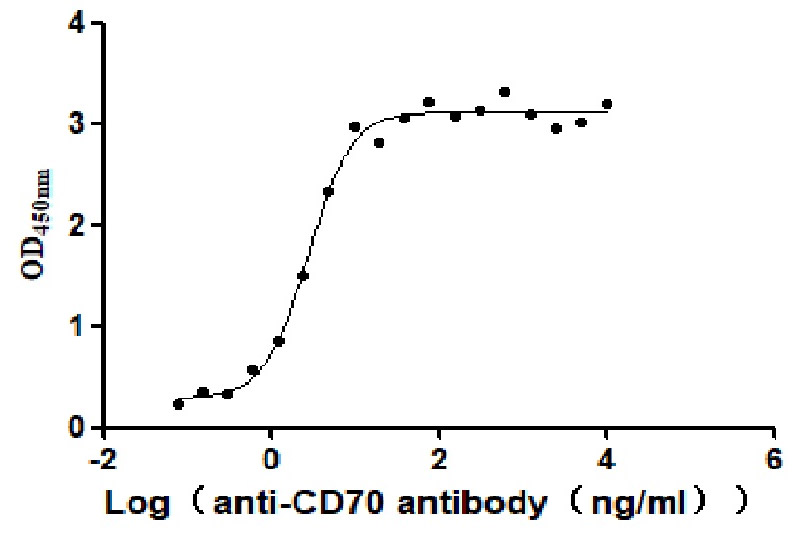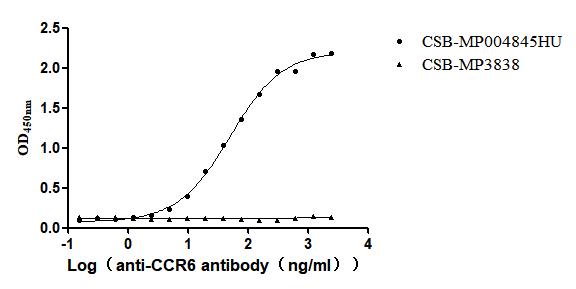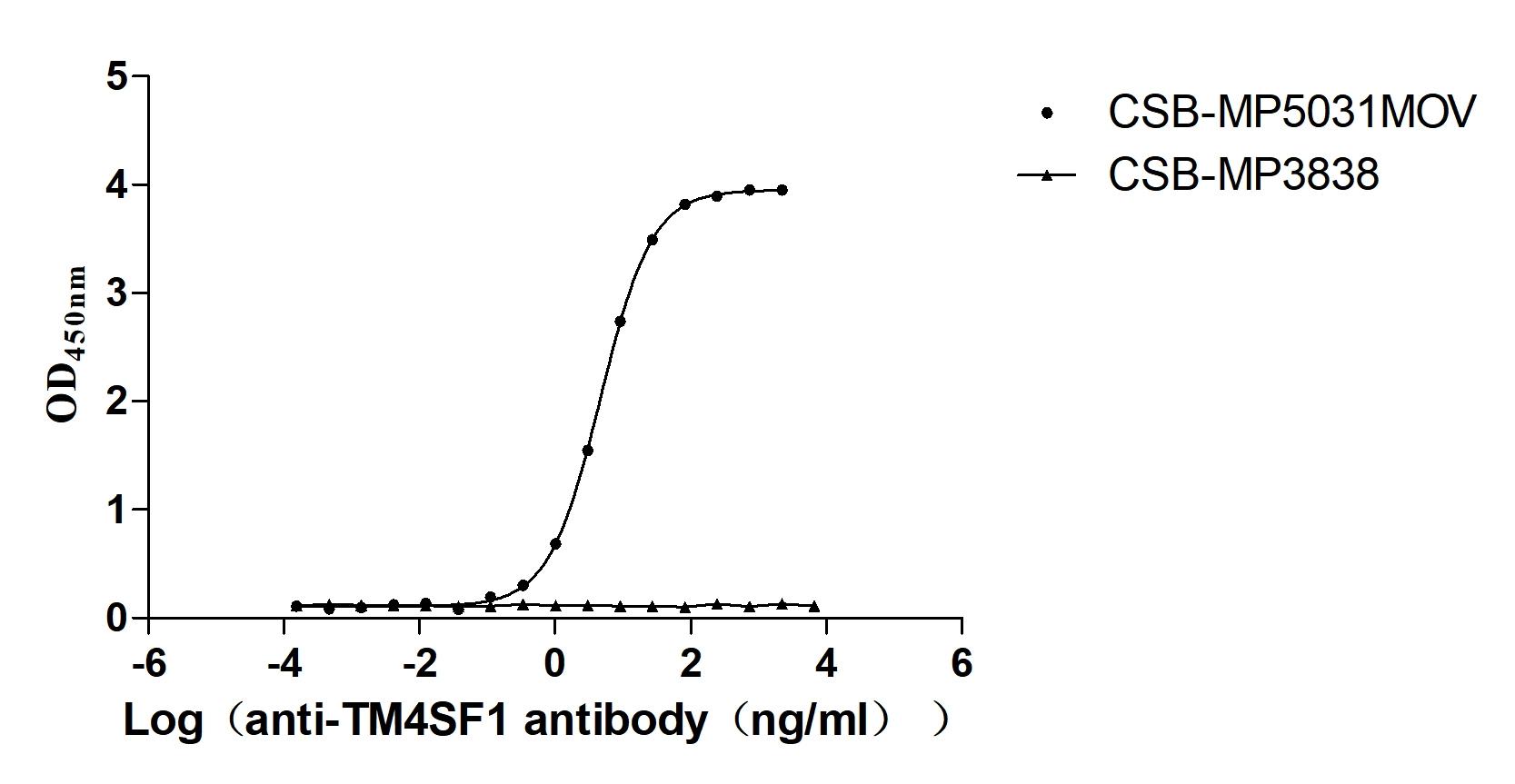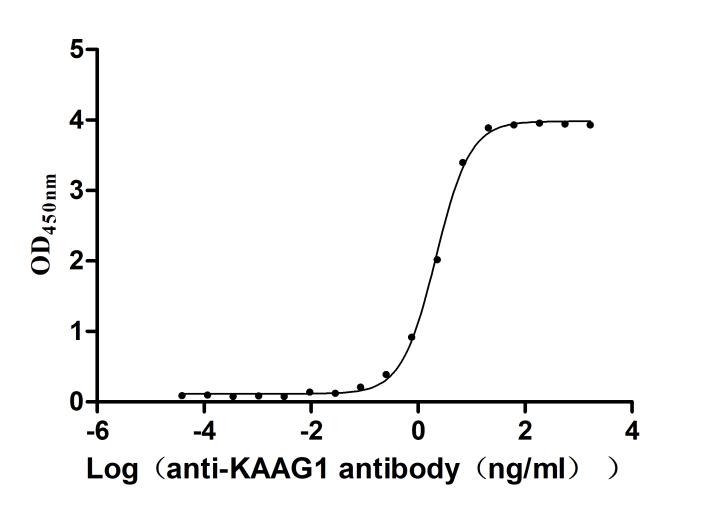Recombinant Arabidopsis thaliana Leucine-rich repeat receptor-like protein CLAVATA2 (CLV2), partial
-
中文名称:Recombinant Arabidopsis thaliana Leucine-rich repeat receptor-like protein CLAVATA2(CLV2) ,partial
-
货号:CSB-YP525705DOA
-
规格:
-
来源:Yeast
-
其他:
-
中文名称:Recombinant Arabidopsis thaliana Leucine-rich repeat receptor-like protein CLAVATA2(CLV2) ,partial
-
货号:CSB-EP525705DOA
-
规格:
-
来源:E.coli
-
其他:
-
中文名称:Recombinant Arabidopsis thaliana Leucine-rich repeat receptor-like protein CLAVATA2(CLV2) ,partial
-
货号:CSB-EP525705DOA-B
-
规格:
-
来源:E.coli
-
共轭:Avi-tag Biotinylated
E. coli biotin ligase (BirA) is highly specific in covalently attaching biotin to the 15 amino acid AviTag peptide. This recombinant protein was biotinylated in vivo by AviTag-BirA technology, which method is BriA catalyzes amide linkage between the biotin and the specific lysine of the AviTag.
-
其他:
-
中文名称:Recombinant Arabidopsis thaliana Leucine-rich repeat receptor-like protein CLAVATA2(CLV2) ,partial
-
货号:CSB-BP525705DOA
-
规格:
-
来源:Baculovirus
-
其他:
-
中文名称:Recombinant Arabidopsis thaliana Leucine-rich repeat receptor-like protein CLAVATA2(CLV2) ,partial
-
货号:CSB-MP525705DOA
-
规格:
-
来源:Mammalian cell
-
其他:
产品详情
-
纯度:>85% (SDS-PAGE)
-
基因名:CLV2
-
Uniprot No.:
-
别名:CLV2; RLP10; At1g65380; T8F5.16Receptor-like protein CLAVATA2; Receptor-like protein 10; AtRLP10
-
种属:Arabidopsis thaliana (Mouse-ear cress)
-
蛋白长度:Partial
-
蛋白标签:Tag type will be determined during the manufacturing process.
The tag type will be determined during production process. If you have specified tag type, please tell us and we will develop the specified tag preferentially. -
产品提供形式:Lyophilized powder
Note: We will preferentially ship the format that we have in stock, however, if you have any special requirement for the format, please remark your requirement when placing the order, we will prepare according to your demand. -
复溶:We recommend that this vial be briefly centrifuged prior to opening to bring the contents to the bottom. Please reconstitute protein in deionized sterile water to a concentration of 0.1-1.0 mg/mL.We recommend to add 5-50% of glycerol (final concentration) and aliquot for long-term storage at -20℃/-80℃. Our default final concentration of glycerol is 50%. Customers could use it as reference.
-
储存条件:Store at -20°C/-80°C upon receipt, aliquoting is necessary for mutiple use. Avoid repeated freeze-thaw cycles.
-
保质期:The shelf life is related to many factors, storage state, buffer ingredients, storage temperature and the stability of the protein itself.
Generally, the shelf life of liquid form is 6 months at -20°C/-80°C. The shelf life of lyophilized form is 12 months at -20°C/-80°C. -
货期:Delivery time may differ from different purchasing way or location, please kindly consult your local distributors for specific delivery time.Note: All of our proteins are default shipped with normal blue ice packs, if you request to ship with dry ice, please communicate with us in advance and extra fees will be charged.
-
注意事项:Repeated freezing and thawing is not recommended. Store working aliquots at 4°C for up to one week.
-
Datasheet :Please contact us to get it.
靶点详情
-
功能:Involved in the perception of CLV3 and CLV3-like (CLE) peptides, that act as extracellular signals regulating meristems maintenance. Required for the sensing of the root CLE peptides (e.g. CLE8, CLE9/CLE10, CLE11, CLE13, CLE14, CLE16, CLE17, CLE18, CLE20, CLE21, CLE25, CLE26, CLE40, CLE41/CLE44 and CLE45), which involves also CRN and leads to root growth regulation, mostly in the phloem and protophloem. Involved in controlling the stem cell population size in shoot and root apical meristems, and during organ development. Promotes the formation of CLV1 multimers. In complex with CRN, perceives secreted CLV3-like effector proteins from plant-parasitic cyst nematodes as ligand mimics of the plant CLE signaling pathway. This recognition is required for proper feeding structure (syncytium) development and ultimately successful nematode infection. CLE14 perception by CLV2/CRN complex triggers root meristem differentiation.
-
基因功能参考文献:
- study reports that the receptor-like protein CLAVATA 2 (CLV2) and the pseudokinase CORYNE (CRN) are necessary to fully sense root-active CLE peptides PMID: 28607033
- CLV1 and CLV2, two receptors involved in CLV3 perception during plant development, contribute to bacterial wilt through a signalling pathway involving the miR169/NF-YA module. PMID: 26990325
- Gene NANA regulates cell proliferation in Arabidopsis thaliana shoot apical meristem without interaction with CLV2. PMID: 25752149
- Over-expression of CLV2 in wild-type plants unexpectedly resulted in a multi-carpel phenotype, mimicking the clv2 mutant, which suggests a co-suppression effect on the endogenous CLV2. PMID: 20961653
- Data report detection of distinct CLV2-CRN heteromultimeric and CLV1-BAM multimeric complexes in transient expression in tobacco and in Arabidopsis meristems. PMID: 20626648
- tested the hypothesis by replacing these cysteines with alanines and showed that depletions of one or both of the cysteine pairs do not hamper the function of CLV2 in SAM maintenance PMID: 20738721
- Studies evaluating the functional specificity of of CLV2 and its related proteins are reported. PMID: 19897604
显示更多
收起更多
-
亚细胞定位:Cell membrane; Single-pass type I membrane protein. Endoplasmic reticulum membrane; Single-pass type I membrane protein.
-
蛋白家族:RLP family
-
组织特异性:Mostly expressed in apices (e.g. shoot apical meristem and flower buds), and, to a lower extent, in flowers, leaves, seedlings and siliques. Also expressed in the inner tissues of the proximal root meristem. Expressed throughout the vascular cylinder of r
-
数据库链接:
Most popular with customers
-
Recombinant Mouse GDNF family receptor alpha-like (Gfral), partial (Active)
Express system: Mammalian cell
Species: Mus musculus (Mouse)
-
Recombinant Human Claudin-9 (CLDN9)-VLPs (Active)
Express system: Mammalian cell
Species: Homo sapiens (Human)
-
Recombinant Macaca fascicularis CD44 antigen (CD44), partial (Active)
Express system: Mammalian cell
Species: Macaca fascicularis (Crab-eating macaque) (Cynomolgus monkey)
-
Recombinant Human Tumor-associated calcium signal transducer 2 (TACSTD2), partial (Active)
Express system: Mammalian cell
Species: Homo sapiens (Human)
-
Recombinant Human CD70 antigen (CD70), partial (Active)
Express system: Mammalian cell
Species: Homo sapiens (Human)
-
Recombinant Human C-C chemokine receptor type 6(CCR6)-VLPs (Active)
Express system: Mammalian cell
Species: Homo sapiens (Human)
-
Recombinant Macaca fascicularis Transmembrane 4 L6 family member 1 (TM4SF1)-VLPs (Active)
Express system: Mammalian cell
Species: Macaca fascicularis (Crab-eating macaque) (Cynomolgus monkey)
-
Recombinant Human Kidney-associated antigen 1(KAAG1) (Active)
Express system: E.coli
Species: Homo sapiens (Human)


